INTRODUCTION
Although for most casual consumers a router will be more than just sufficient to cover their needs more advanced business users will always seek to upgrade to a good switch whether that's because of a large number of systems in the local network or due to numerous PoE (power over Ethernet) compatible devices such as IP cameras, access points and VoIP (voice over IP) phones. Still much like everything else in the electronics industry not all switches are created equal and so to pick the right one you always need to know just how many ports you may end up needing in the near future and their types (RJ45 and/or SFP), the amount of power output you may need for your PoE compatible devices and just how much control you may or may not want over its features (unmanaged, managed or smart). The latest LGS318P 18-Port PoE+ Gigabit Switch is part of the Smart family of switches by Linksys and today we're here to test and see if it should have a place in your home, office or small business.
The Linksys brand has pioneered wireless connectivity since its inception in 1988 with its leading innovation and engineering strategies, and best-in-class technology, design, and customer service. Linksys enables a connected lifestyle for people at home, at work and on the move, and with its award-winning products, simplifies home control, entertainment, security and Internet access through innovative features and a growing application and partner ecosystem. Linksys is part of Belkin International.
The LGS318P 18-Port Smart PoE+ Gigabit Switch may seem a little bit "overkill" for use in homes and even small offices but with a total of 18 ports (16 RJ45 and 2 RJ45/SFP combo ones), 128MB of RAM and almost complete control over all its functions it could be the very first and last switch you'll ever need. What's even more impressive however is its list of features including the 16 RJ45 Gigabit Ethernet ports which fully support PoE+ (power over Ethernet plus) and can deliver a total of 125W to compatible devices (up to 25.5W on each port - most IP cameras for example use 3/5W), ability to use link aggregation with up to 4 groups (8 ports maximum per group), support for port mirroring (network traffic monitoring), total of 128 active VLANs (4094 range) and the quite impressive switching bandwidth of 36Gbps. So is the LGS318P the go to solution for demanding users and professionals alike?
SPECIFICATIONS AND FEATURES

..........
PACKAGING AND CONTENTS
Linksys has once again used a plain cardboard box with their logo on it and a small sticker with a product picture and a description of the LGS318P.
Two foam spacers and a plastic bag are used to keep the device safe during transport.
Inside the box Linksys has placed the LGS318P 18-port Smart PoE+ Gigabit Switch with its power cord, two metal rack mounts, two small plastic pouches with screws, 4 rubber feet, documentation CD and the quick install guide.
THE LGS318P
Measuring no less than 440mm in length, 200mm in depth and 44mm in height the LGS318P is not a small switch.

Typically the LGS318P has a PoE+ Max status LED (indicates the amount of power delivered to devices), system LED and a reset button.
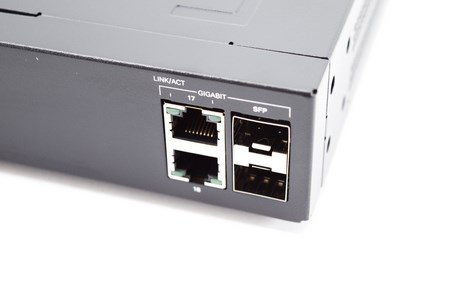
Both sides of the switch are perforated but Linksys has also placed a single 40mm intake fan on the right side that spins up to 8200RPM.
The power port is the only thing placed at the rear of the LGS318P.
By default the LGS318P comes without any feet attached since you may use it inside a rack but since we tested outside of one we used the ones bundled.
WEB INTERFACE PART 1
Once you access the web interface you will see the system summary page which shows you which ports are being used, the firmware and hardware version, serial number and device uptime.

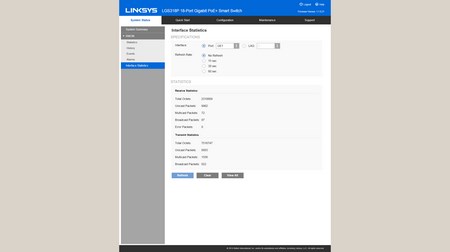
From the RMON drop-down menu you can access the statistics, logs, events and alarms of all ports.
The quick start tab acts like a setup wizard since it points you towards the main settings.
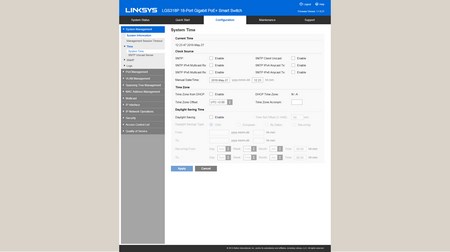
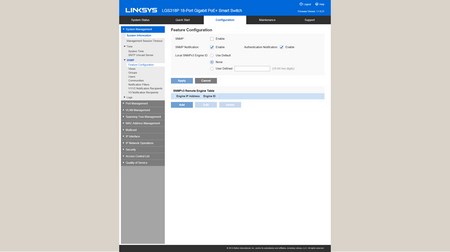














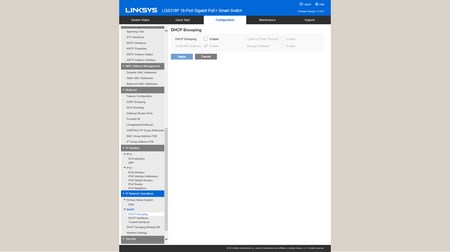

Accessing the configuration tab allows you to adjust the time, setup SNMP (simple network management protocol), manage all ports, enable link aggregation, enable/disable green and energy efficient Ethernet (for maximum performance we suggest disabling both features), prioritize power distribution, monitor power delivery, setup VLANs, adjust IPv4/6/MAC addresses, enable/disable DNS and finally you can use the Spanning Tree and DCHP snooping features.
WEB INTERFACE PART 2






From the configuration page you can also add/remove users, enable/disable RADIUS server, setup port authentication and security, use the traffic storm control feature and setup QoS (quality of service).
As expected you can upgrade the firmware of the switch and run various diagnostics from within the Maintenance tab.
TESTING METHODOLOGY
Network switches are pretty much identical to routers so we’ll be using roughly the same testing methodology. So aside the usual networking benchmark by Passmark (v8.0) this time we will start our tests with the latest versions of ATTO (v3.05), Crystal Disk Mark (v5.1.2) something which we couldn’t do in the past since these versions have updated testing methodologies and thus are not compatible with the results we’ve gathered over the years. Also as you’ve already noticed we decided to replace the QCheck by Ixia with Crystal Disk Mark since we feel it’s a more complete choice. To test all network switches we are using two of our desktop systems outfitted with two Kingston HyperX Predator 480GB PCIe SSDs (these SSDs combined with two XT540-AT2 PCIe cards will enable us to also fully test 10GbE network switches). Our systems are placed 15m away (connected with CAT7 cables) from the switch in hand and each test is repeated a total of 6 times after which the average scores are recorded into our charts. Both systems have Windows 7 Ultimate SP1 installed with all the updates until the 15th of August 2016.
Also just like with Modem/Routers we will also be recording power consumption is these reviews during all our tests and both the lowest and highest numbers will be available in our charts. Finally when testing network switches with built-in fans (like the XJ712T) we will also record noise levels using our high precision ExTech HD600 Decibel Meter placed about 5-10cm away.
TEST RESULTS


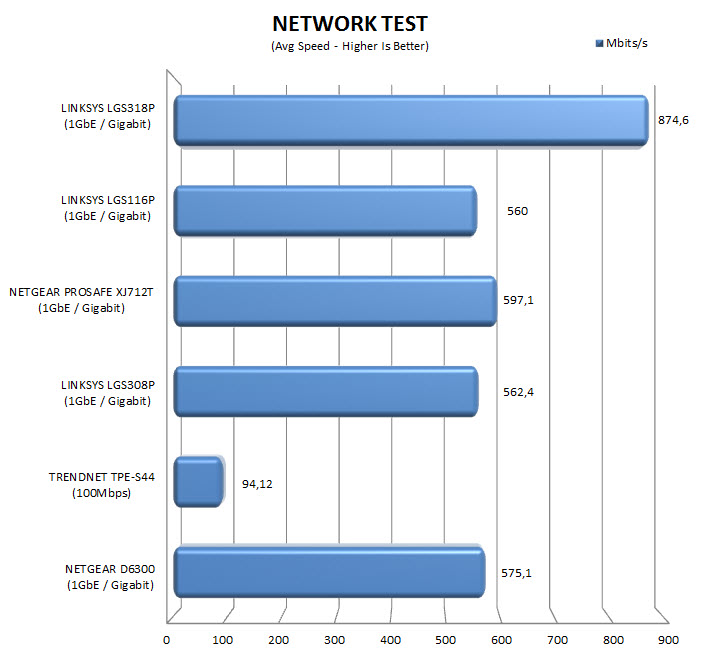
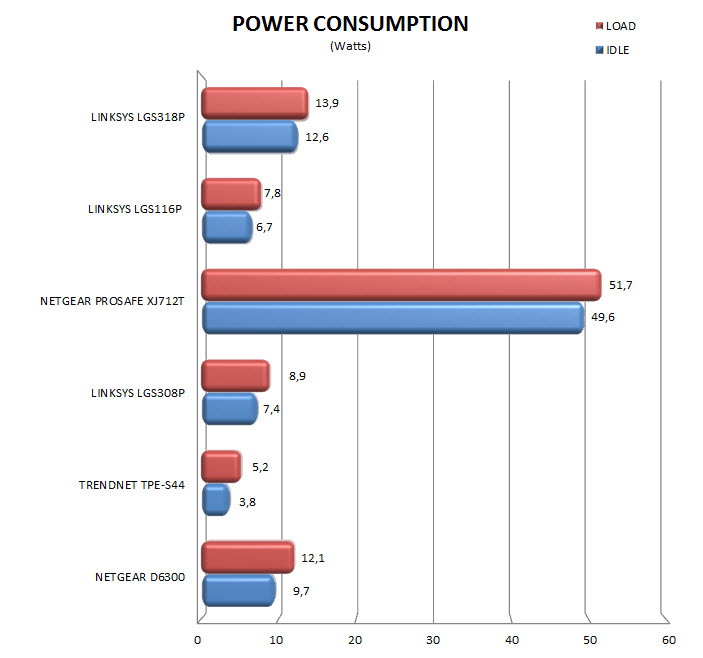

CONCLUSION
In a market filled with “basic” switches the Linksys LGS318P with its very good build quality, 16 PoE+ compatible ports, available features and excellent performance really stands out. Unfortunately I never really expected it to be just as large as the XS712T 10GbE switch by Netgear nor did I expect it to come with a rather loud fan (at least when things are starting to get hot) but the massive number of available settings that give you almost complete control over each and every single one of its aspects/features are actually more than enough to make us forget about these two. At the same time however not even we can ever hope to use all available settings (to make things easier to understand we’ve been using this switch since May and yes we didn’t even end up using half of them at most) so for consumers who care not about getting a smart or a managed switch one of the unmanaged solutions like the LGS116P might be a better and a far more “affordable” choice.
The LGS318P 18-Port Smart PoE+ Gigabit Switch by Linksys has but a single drawback and that’s its rather high price tag which is currently set at USD360.99 inside the USA (Amazon.com) and at 346Euros inside the EU (Amazon.co.uk). Of course most of the time you get what you pay for and honestly the LGS318P is the sturdiest and most feature-rich switch to ever come through our lab (minus 10GbE connectivity) so we did expect it to cost quite a bit just not as much and this is also why we feel that most consumers and even professionals might just be better off with one of the unmanaged models like the LGS116P (costs half as much). At the end of the day however Linksys does market the LGS318P as a Business model and in that segment of the market performance and features is all that matters and since it does exceptionally well in both it gets our Platinum Award.

PROS
- Build Quality
- Excellent Performance
- 18 RJ45 & 2 SFP Ports
- 16 PoE+ Compatible Ports
- 125W Maximum Power Output (For PoE+)
- Available Settings / Features
- Power Consumption
- Lifetime Warranty
CONS
- Price (For Some)
- Somewhat Loud Fan (At High Temperatures)

 O-Sense
O-Sense














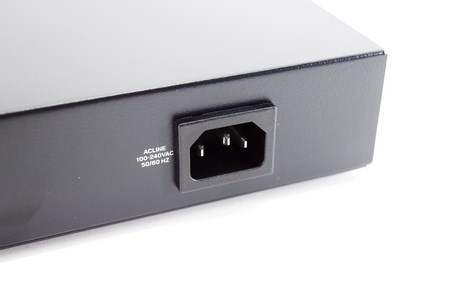







.png)

